Harry Potter meets Valorant: Wands Alliances is the best shooter on the Quest 2
Expelli-arms race
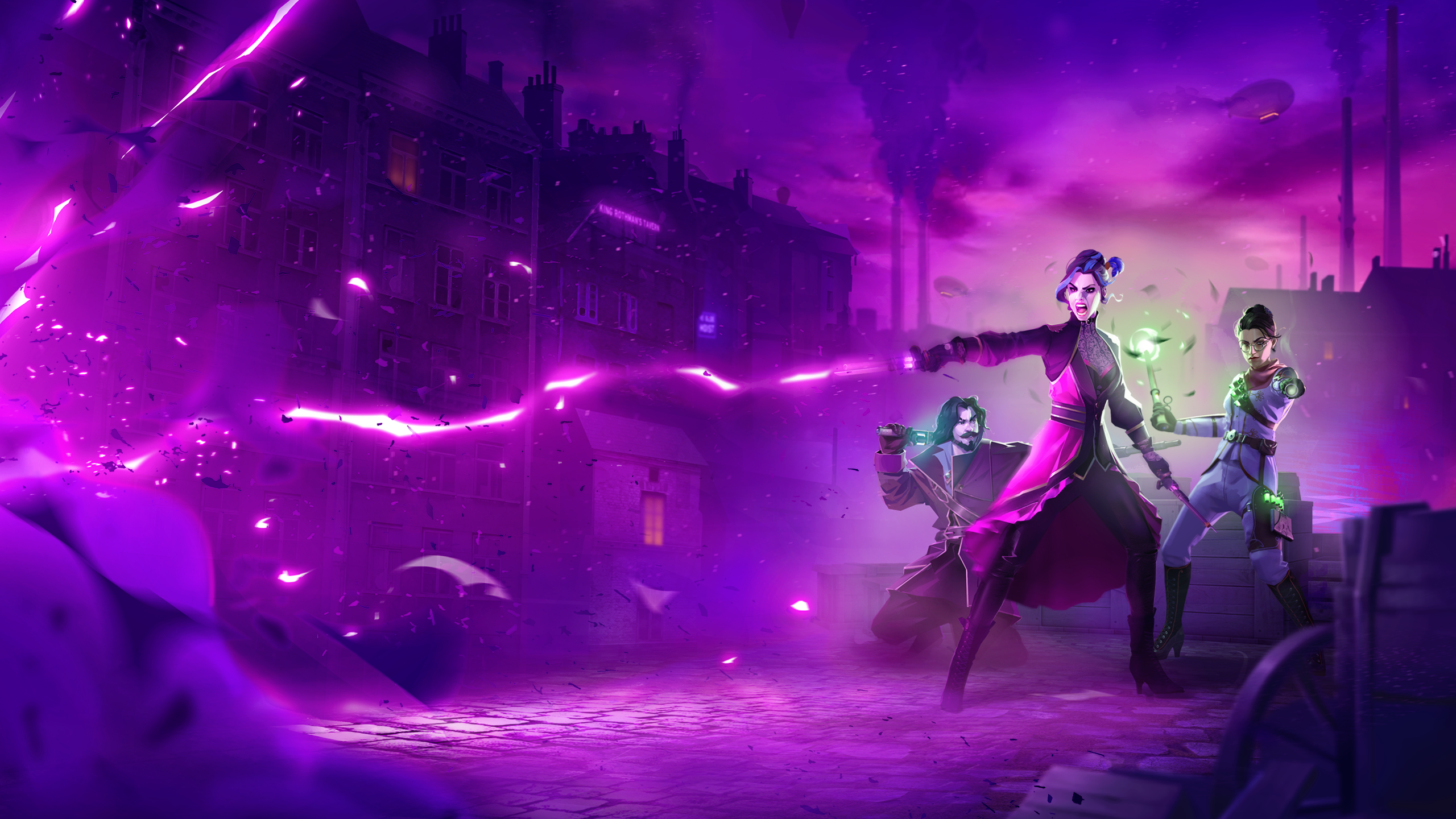
Wands Alliances is a brand new game for the Meta Quest 2 from developer Cortopia Studios, and its excellent blend of elements from Harry Potter, Valorant, and chess makes it one of the best shooters I’ve ever played – be it in VR or not.
While immersed in steampunk London-themed maps, players split across two teams sling a diverse collection of spells at each other in order to complete their mission and secure victory. But you can’t let the heat of battle cloud your mind: Wands Alliances players need to think several moves ahead as they try to not only overpower their foes but outmaneuver them too.
Finding the sweet spot between strategic and chaotic gameplay, Wands Alliances is an absolute blast to play and a game I can’t wait to master.
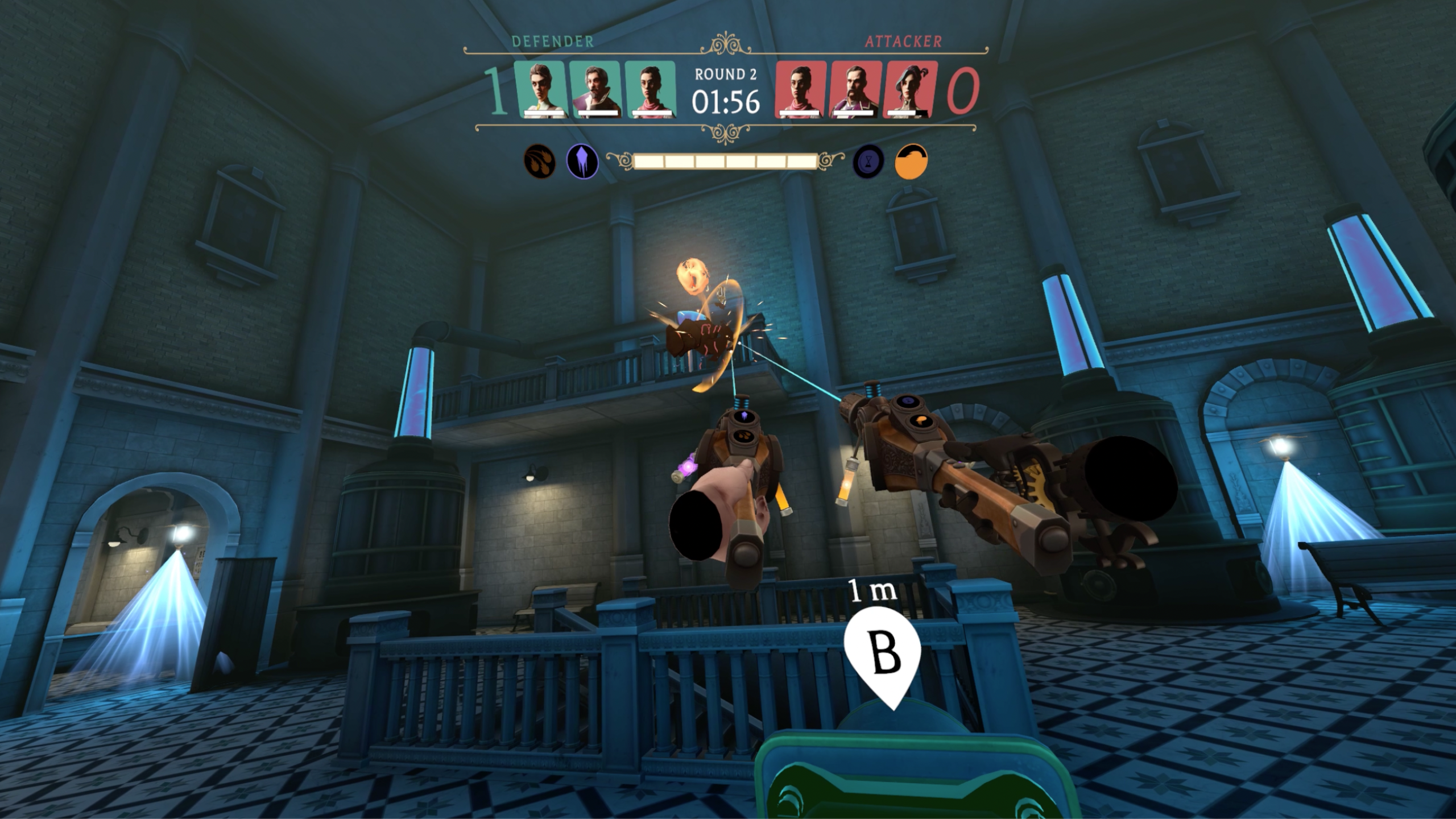
At its core Wands Alliances is a pretty typical 3v3 hero shooter with a wizarding twist, offering similar gameplay to Valorant.
Once a match loads up players are split into two factions: The Ministry and The Watchers.
For the first four games in a match, one of these factions will be the Attackers, their objective to plant the Omega Device (a hocus pocus bomb) at one of two sites and detonate it before time runs out. Meanwhile, the Defenders must prevent this explosion, either by running out the clock or defusing an activated Omega Device.
After four games, Attackers will become Defenders and vice versa and the battle will resume.
Get daily insight, inspiration and deals in your inbox
Sign up for breaking news, reviews, opinion, top tech deals, and more.
Alternatively, you can ignore the bomb objective for all eight games and go for an all-out war. If one team is completely eliminated then they lose that game.
To help your side achieve these objectives, you select one of six unique spellcasters to play as at the start of the match (and can swap after four games). These champions are spread across three different classes: Damage Dealer, Healer, and Support.
It's where Wands Alliances mixes up the formula that it sparkles
Characters aren’t as fleshed-out as the heroes you’ll find in Overwatch 2 – they're missing Blizzard's numerous powers and ultimate attacks – but they do come with a unique ability that makes them better at what they do, and each class has its own pool of spells that you can choose from between matches.
My favorite character was The Spellslinger, a Damage Dealer who gets back life when they defeat an opponent – encouraging you to hunt down players rather than letting them flee. Other classes offer similarly complementary abilities, with boons that reward you for playing your role correctly.
This tried and true gameplay loop would make for a fine game on its own, but it's where Wands Alliances mixes up the formula that it sparkles.
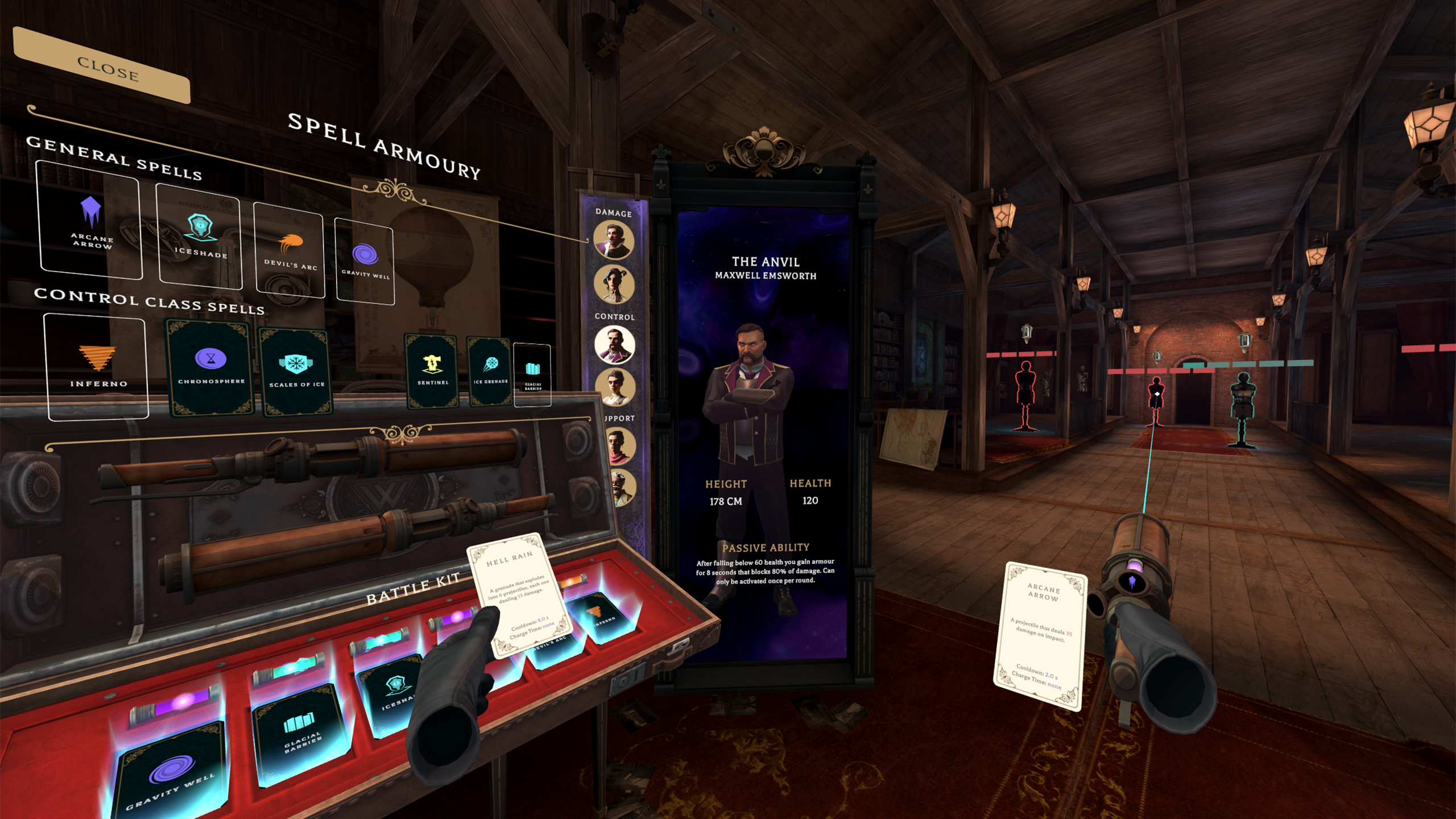
Swap duty for duels
Before I tried Wands Alliances I was concerned that it would feel like a reskinned Call of Duty – the new entry of which we're a little worried about – with wand-waving that was more like wielding a firearm. While it doesn’t require you to move your controller in well-choreographed swishes and flicks, nor pronounce spell names properly, Wands Alliances’ combat isn’t the same as your run-of-the-mill shooter.
Each battle feels like a proper duel between wizarding foes. Using an arsenal of four spells split across your two dual-wielded weapons you’ll duke it out – firing off, deflecting, and dodging incoming magic in a fight for your life.
Fast-charging and fast-moving spells are generally fairly weak, but are perfect for blocking the scarier, more explosive attacks that travel slowly yet deal massive damage if they connect. Alternatively, you can opt for a defensive shield, deploying a wall of ice or a reflecting spell that sends attacks hurtling back at your opponent. Then there are more tactical options, like a lightning cloud and arcane turret that both hurt your opponents and hinder their movement.
There are a lot of different options to choose from when selecting your character’s loadout, but thankfully Wands Alliances won’t let you get overwhelmed. When you first start out you’ll only have access to a few well-chosen magical abilities. Though a bit simpler than the powers you’ll unlock at higher levels, those first spells are still pretty strong, and reliable options whether you’re a newbie or a veteran player.
The new spells are always a blast to try out. As you level up you’ll steadily build a custom loadout for each character that suits their abilities and your playstyle – allowing you to go all-aggro, all-support, or something in-between.
As you’ll learn, though, Wands Alliances isn’t just about casting the right spells, but where you cast them from.
Me to D5
The most unique and important aspect of Wands Alliances is its movement, which is almost chess-like in its restrictions and rules. Mastering this strategic element will be the difference between victory and humiliating defeat.
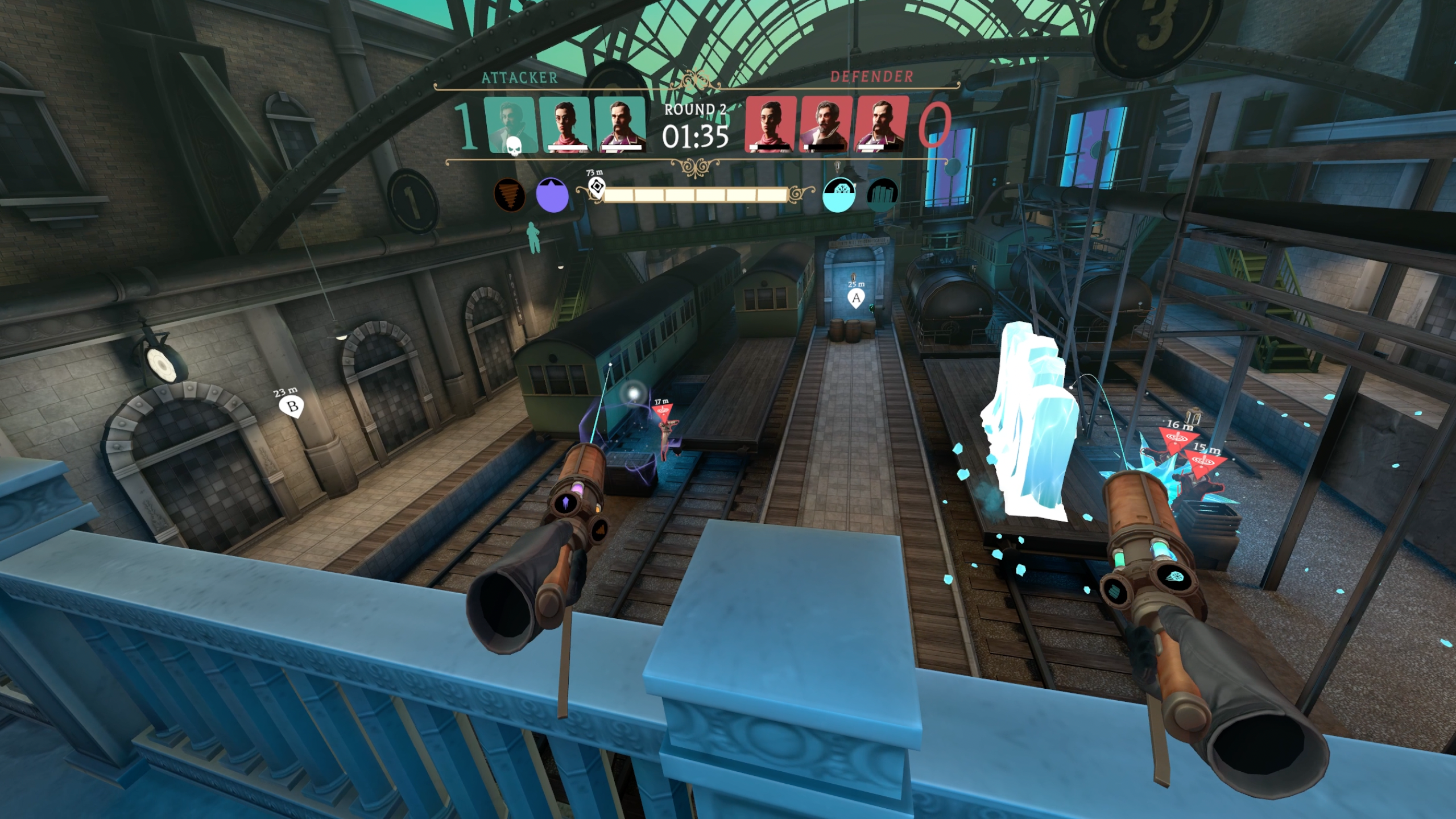
Unlike classic console shooters, Wands Alliances doesn’t allow you to move freely around with the control stick. Instead you’re forced to teleport between different lanterns placed around each map.
The developers explained in our play session that this decision was made for three reasons. Firstly, teleportation movement is much less motion-sickness inducing than free movement in VR. Secondly, the team found that by forcing players to not use control stick movement they became more likely to move their bodies. You can’t just waddle out of the way of incoming fire – you have to duck behind cover, enhancing your immersion and taking full advantage of the gameplay offered by VR.
Teams can trap opposing players or force them to move to certain spots
Lastly, it allowed the team to create this chess-like tactical element. You can only teleport to a lantern if you’re near enough to it and if it’s unoccupied (or a teammate is stationed on it). Using these two simple rules, teams can trap opposing players or force them to move to certain spots by blocking off the right lanterns with spells or their own bodies.
During the demo, several of my victories were caused by either forcing the remaining enemy onto a single point and blasting them with massive AOE spells they couldn’t escape from, or holding specific points so that our opponents couldn’t get in and defuse our planted explosive in time.
Beyond their placement, lanterns also come with their own tactical advantages and disadvantages. Those placed higher up give you a great view of the battlefield below, letting you spot and snipe players – though without a lot of cover, you’re just as easy a target. Less elevated positions won’t give you as good a view but you’ll have plenty of barriers to hide behind to avoid incoming fire.
Mischief managed
Admittedly, the many different facets of Wands Alliances can be a lot to get your head around at times. You have to remember to equip the right spells, how the map’s laid out, keep an eye on the enemy's movement and their abilities, dodge magic that can come from almost any angle, and keep in constant communication with your team over mic.
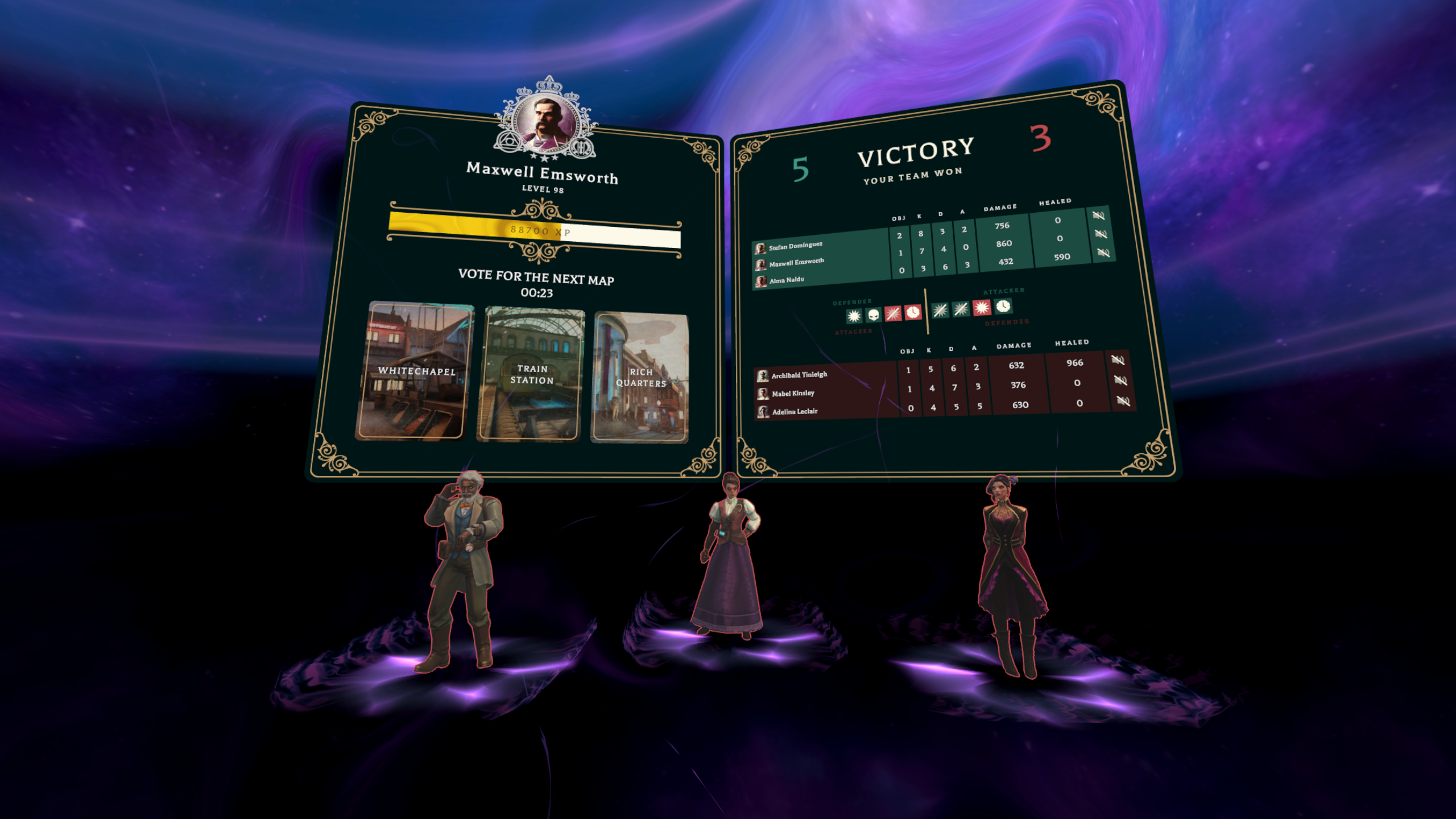
But the game does an awesome job of easing you into its controlled chaos gently – giving you more limited class and spell options when you start out and forcing you to play an in-depth tutorial before you can jump into its multiplayer mode.
And, while it has the scope to become a much more tactical and complex shooter, you can still just hop in and have a more casual time slinging spells if you don’t want a competitive vibe. This basic yet exhilarating side of the game offers more than enough enjoyment, especially if you’re playing the game with friends online.
Wands Alliances is out now on the Meta Quest 2 and it’s definitely one to pick up if you’re looking for the best VR games.

Hamish is a Senior Staff Writer for TechRadar and you’ll see his name appearing on articles across nearly every topic on the site from smart home deals to speaker reviews to graphics card news and everything in between. He uses his broad range of knowledge to help explain the latest gadgets and if they’re a must-buy or a fad fueled by hype. Though his specialty is writing about everything going on in the world of virtual reality and augmented reality.